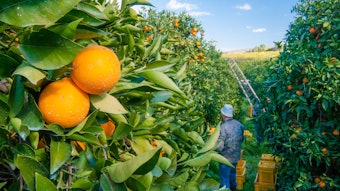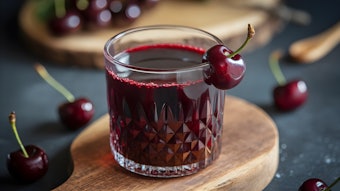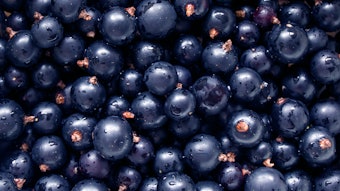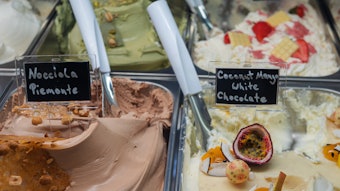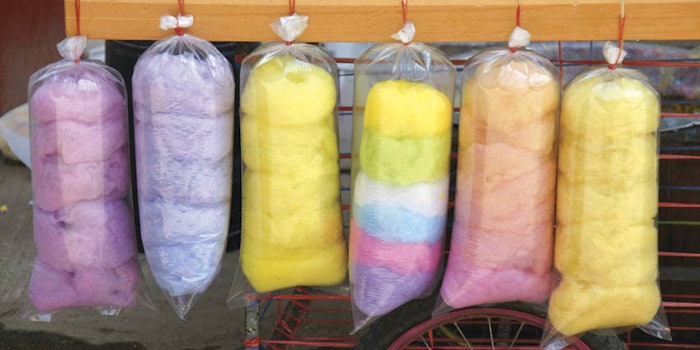
Long, long ago, in the dark ages at the start of my career as a flavorist each new chemical caused quite a stir. Most had been newly discovered in nature and then subsequently synthesized, but a diminishing number had followed the old traditional path of chemical invention.
In my opinion, the most revolutionary new flavor at that time was a startlingly authentic strawberry flavor developed by Esrolko in Switzerland (Esrolko is now part of Givaudan). Some of the novel ingredients in this flavor had indeed been recently discovered in strawberries but the backbone of the flavor, ethyl maltol, was not found in strawberries or anywhere else in nature.
Ethyl maltol remains highly useful to this day but a much more authentic representation of that attractive “candy” note in strawberries is undoubtedly Furaneola, which is actually found in strawberries. The problem with Furaneolis that it is quite prone to oxidation and requires careful handling. Despite efforts to retard oxidation, off notes can develop on storage of finished foods and some of the oxidation products are disconcertingly fenugreek in character (the bizarre combination of fenugreek and strawberries could at best be described as an “acquired taste”).
The ingredient, 2-Ethyl-4-hydroxy-5-methyl-3(2H)-furanone (FEMA# 3623, CAS# 27538-09-6) has a very similar profile to Furaneol but has two added advantages. Firstly, it is not nearly as prone to develop off notes through oxidation. Secondly, it is significantly stronger – the strength difference varies for different flavors but is typically about three fold.
Combinations of “candy” notes are especially useful and the combination of, relatively weak, maltol and, distinctly powerful, 2-ethyl-4-hydroxy-5-methyl-3(2H)-furanone is especially useful. The two chemicals have a broadly similar characters but their effect in combination is significantly enhanced. It is interesting to note that they actually occur together in a number of foods!
Note that the dose rates given throughout this article are the levels suggested for use in flavors intended to be dosed at 0.05% in ready-to-drink beverages or in a simple bouillon.
Berry Flavors
Blackberry: 2-ethyl-4-hydroxy-5-methyl-3(2H)-furanone is very effective in blackberry flavors, adding welcome ripeness and depth in the region of 300 ppm.
Blackcurrant: The effect of this ingredient in realistic blackcurrant flavors is very similar but the best level of addition is a little lower, nearer 200 ppm.
Blueberry: It is quite feasible to make a good blueberry flavor without any candy notes but the addition of a modest level of this chemical, around 100 ppm, is quite effective at rounding out the aroma and taste profiles.
Cranberry: The same comments also apply to cranberry flavors and the ideal level is also 100 ppm.
Raspberry: As with blackberry flavors, the combination with raspberry ketone is surprisingly effective, giving a very attractive, ripe, berry character. An ideal level of addition is 300 ppm.
Strawberry: Strawberry flavors are where 2-ethyl-4-hydroxy-5-methyl-3(2H)-furanone really comes into its own. Here it is very advantageous, as well as more economical, to use this ingredient in conjunction with maltol. Levels vary depending on the profile but 3,000 ppm is a good starting point. Although maltol, when tasted alone, is much weaker than 2-ethyl-4-hydroxy-5-methyl-3(2H)-furanone, the ideal level of addition of maltol when used in combination should be similar, around 3,000 ppm.
Tropical Fruit Flavors
Guava: Guava flavors have a distant structural resemblance to strawberry flavors and 2-ethyl-4-hydroxy-5-methyl-3(2H)-furanone is very effective at quite a high level, around 700 ppm.
Kiwi: This ingredient adds richness and depth to delicate kiwi flavors at around 300 ppm.
Mango: A good level in mango flavors is 500 ppm, providing an attractive, deep, “candy” background aroma and taste.
Passionfruit: Only 200 ppm of this chemical is needed to fill out and enhance passionfruit flavors.
Pineapple: 2-ethyl-4-hydroxy-5-methyl-3(2H)-furanone makes a very important contribution to the character of all pineapple flavors. A good starting point is 700 ppm. The effect is greatly enhanced by the addition of 4,000 of maltol.
Other Fruit Flavors
Apricot, Cherry and Peach: All stone fruit flavors benefit from the addition of modest levels of 2-ethyl-4-hydroxy-5-methyl-3(2H)-furanone. An ideal level for apricot is 200 ppm, 100 ppm for cherry and 300 ppm for peach.
Grape: All the different styles of grape flavors work well with around 300 ppm of this ingredient, perhaps shading a little higher for Concord grape flavors.
Orange: This ingredient has an unusual effect in orange juice flavors and higher levels are not attractive in my opinion. Nevertheless, the addition of just a trace, around 20 ppm, can add subtle realism.
Rhubarb: A good level in rhubarb flavors is 100 ppm, particularly those designed for use in yogurt.
Savory Flavors
Beef: 2-ethyl-4-hydroxy-5-methyl-3(2H)-furanone can either be used alone or in combination with maltol in roast beef flavors. An effective level of addition would be 1,000 ppm, influencing both the aroma and the taste effects.
Chicken: A much lower level, nearer 100 ppm, is more effective in all types of chicken flavors but it is still a very useful ingredient.
Ham: Pork flavors benefit from a similar 100 ppm level to chicken flavors but all types of processed pork flavors, including ham and chopped pork, work much better with higher levels, in the region of 700 ppm.
Soy Sauce: The ideal level in soy sauce flavors depends on the style required. A more subtle, naturally brewed, traditional Japanese style is best served by a moderate level of 2-ethyl-4-hydroxy-5-methyl-3(2H)-furanone, around 800 ppm. The effect in soy sauce flavors is definitely improved by the addition of a similar amount of maltol.
Brown Flavors
Bread: As with soy sauce flavors, the effect of 2-ethyl-4-hydroxy-5-methyl-3(2H)-furanone is greatly enhanced by the addition of maltol. A good level of addition is 100 ppm for 2-ethyl-4-hydroxy-5-methyl-3(2H)-furanone, but the best level of maltol is much higher in bread flavors, around 1,000 ppm.
Caramel and Toffee: Both caramel and toffee flavors need the candy note of this ingredient. A good starting point is 700 ppm.
Chocolate and Cocoa: The ideal level of 2-ethyl-4-hydroxy-5-methyl-3(2H)-furanone in cocoa flavors is in the region of 700 ppm. The ideal level in all the different styles of chocolate flavors is the same.
Coffee: Coffee flavors can sometimes be harsh and 400 ppm of this raw material adds depth and an attractive taste element.
Licorice: The combination of maltol and 2-ethyl-4-hydroxy-5-methyl-3(2H)-furanone is, once again, very interesting in licorice flavors. A good level for 2-ethyl-4-hydroxy-5-methyl-3(2H)-furanone is 100 ppm and 500 ppm is a good level for maltol.
Malt: Similar comments apply to malt and malted milk flavors. A level of 200 ppm is ideal for 2-ethyl-4-hydroxy-5-methyl-3(2H)-furanone and 2,000 ppm of maltol provides a good foil.
Maple: A level of 1,500 ppm of this ingredient forms an excellent base for realistic maple syrup flavors, combining very effectively with the various maple furanone notes.
Molasses and Brown Sugar: Levels in molasses and brown sugar flavors vary but 300 ppm is a reasonable place to start.
Black Tea: Here again this ingredient combines very well with maltol. A level of 100 ppm is a good level for both chemicals.
Vanilla: 2-ethyl-4-hydroxy-5-methyl-3(2H)-furanone would be wasted in French style vanilla flavors but a moderate level of 100 ppm works well in vanilla bean extract style flavors
Other Flavors
Honey: A level of 250 ppm of 2-ethyl-4-hydroxy-5-methyl-3(2H)-furanone offsets the floral notes in many honey flavors and adds depth of taste.
Milk and Dairy: 2-ethyl-4-hydroxy-5-methyl-3(2H)-furanone might seem an obvious ingredient in condensed milk flavors. An addition of 100 ppm works well in condensed milk flavors in combination with 200 ppm of maltol. Less obviously, this same combination, and the same levels of use, are also attractive in cream and cheese flavors.


